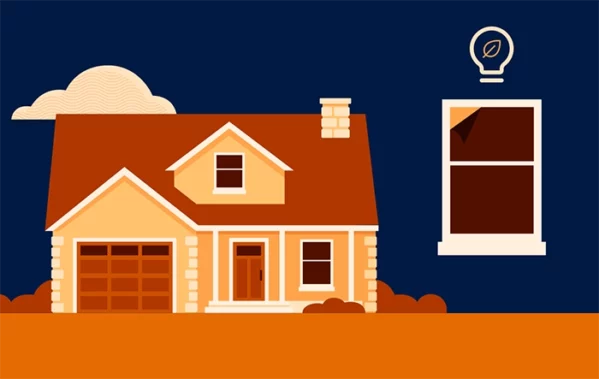Economic and industry news or trends
What it takes to protect homes from hurricanes
Over 100 mph winds, cascading rainfall and rising flood waters consume homes when the impending eye of the storm makes its way to land. Since the start of the 2020 season, an unprecedented number of storms have ravaged the Gulf and East coasts. Of the 50 named storms that formed that season, 18 hit the lower United States including seven powerful enough to be classified hurricanes, according to the Washington Post.
Hurricanes are a force to be reckoned with, and without the proper preparation, they can devastate coastal communities. So, how do home builders help homeowners in hurricane hot spots brace for the inevitable?
We’re highlighting how to improve a home’s hurricane resiliency with areas of focus and insight from Dave Clegg, owner of Grayhawk Remodeling in Bradenton, Fla.
Check it out.
What are the best methods for ensuring a hurricane proof house?
Green Building Solutions, an organization promoting sustainability in construction, suggests keeping these four crucial steps in mind when building or preparing a home for the impacts of a hurricane.
- Raise it up: For homes that could easily be impacted by a hurricane, especially those built near or on the oceanfront, it’s essential to build above the storm-surge water level. Lifting houses in this way will prevent flooding to the home and will keep HVAC, electrical and telecommunication systems from being destroyed.
- Tie it down: One of the most important elements in a hurricane resistant home is the roof. Because the roof is critical for securing the home and everything inside, protecting it from upward winds is key. Using products such as steel hurricane roof clips, plates and metal tie-down straps will help to anchor the roof in place. It’s also a good idea to apply spray polyurethane foam to prevent air from permeating.
- Secure its sides: Walls built for hurricanes should be able to bend with the strong winds as opposed to breaking from the pressure. Using materials such as insulated concrete or structural insulated panels will help home builders ensure the sturdiness of a home.
- Protect its openings: It may seem obvious, but openings like windows and doors are some of the most vulnerable areas of a home during a hurricane. That’s why it’s important to protect them with storm shutters. It’s also recommended that standard windows be replaced by impact windows for added protection.
What other factors make homes fail during hurricanes?
Roofs and openings to a house are major points of risk in a hurricane, but there are other areas to consider when preparing a hurricane proof house. Even with proper protection, some features can still fail under certain circumstances.
“There are multiple factors that can lead to a home failing during a hurricane,” Dave said. “These include but are not limited to: Base construction (masonry versus frame), lack of properly installed strapping or tie downs and failure of the building envelope resulting in rapid changes in pressure inside the structure. This could be the result of an opening being compromised from an impact or wind load.”
What other ways can a home be made hurricane ready?
In addition to installing the necessary protection to a hurricane proof home, homeowners should consider bolstering their homes’ survival chances by hardening the exterior and interior of their home.
“After adding impact-rated doors, windows and/or shutter systems, it’s important to install strapping to all connections – trusses to walls, walls to floors,” Dave said. “Homeowners will also want to reduce the amount of outside items that can become windborne debris and remember to keep their trees trimmed and free of dead, overextended branches.”
If you’re building for extraordinary circumstances, we’ve got the tools you need.
Building for the extreme is made easier with the use of tech. If you’re looking for a better system that will improve the way you tackle your toughest construction jobs, schedule a demo today.

Bathroom design trends in 2024
With life being so fast-paced, bathroom designs are embracing the concept of personal sanctuaries. Here are the latest bathroom design trends for 2024.

How window tinting can increase energy efficiency in new builds
Here are five reasons why home window tinting is becoming an increasingly popular choice for and energy-conscious enhancement on new builds.

The 2024 housing market outlook
In this 2024 construction industry update, Buildertrend’s in-house expert shares insight into the lock-in effect, interest rates and the labor shortage.
Want to contribute to our blog?
We believe in building a community for construction – sharing is a big part of that. If you have industry expertise or a story to tell, your voice can reach thousands here.

